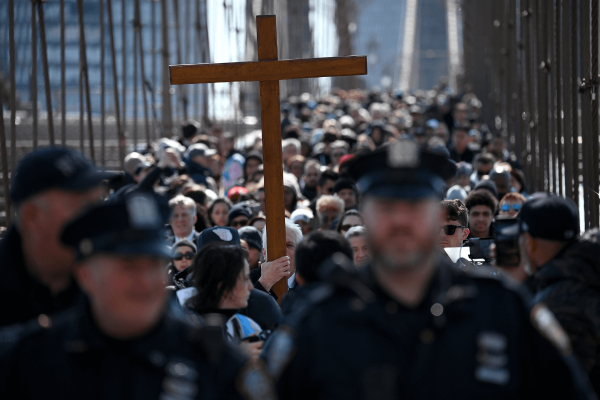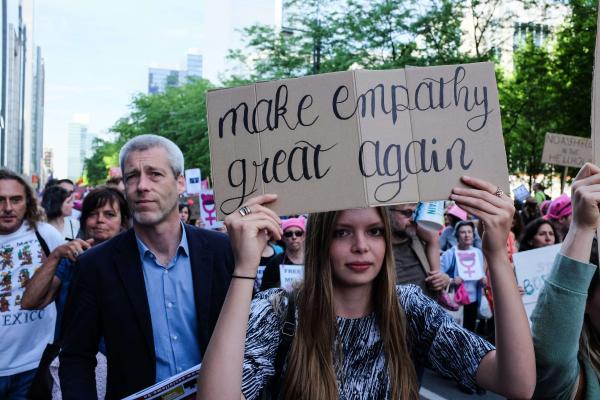Growing up in Miami, Fla., music sung in Spanish infused with Caribbean, tropical, and Andean sounds and rhythms was commonplace. Reggaetón, the mix of Afro-Caribbean percussion and hip-hop lyricism, was at its zenith around the time I was going to prom. When the beat drops on a reggaetón song, Miamians can’t resist hitting the dance floor. This cultural backdrop means home is where the fiesta is located — where hips don’t lie and don’t stop moving.
Today, I live in Washington, D.C., and often find myself missing the ubiquity of Latinx culture in South Florida. To cure the homesickness, I’ve developed a voracious appetite for music in Spanish — reggaetón, salsa, Latin pop. So I was pleasantly surprised when the latest song by Puerto Rican artists Luís Fonsi and Daddy Yankee, “Despacito,” at the top of the Latin charts, started to be picked up by English-speaking mainstream radio stations and dance clubs. “Despacito” is contagious — a reggaetón track that celebrates Puerto Rican culture, with electro-Caribbean beats, romantic acoustic guitar, and lyrics that celebrate love and dance. The single’s distinctly Latinx artistry was rewarded when it broke the record for longest number of consecutive weeks spent at #1 in the Latin Billboard charts.
Then Justin Bieber happened.
Riding the song’s wave of success, the white Canadian singer was featured in a remix of “Despacito" released at the end of April. In the remix, Bieber contributes some English verses and then takes his shot at singing the Spanish chorus, in Spanish. (On the recording, anyway. His attempt at singing in Spanish at a concert failed, virally.)
This newer version of “Despacito” went even further, reaching #1 in the Billboard Hot 100 charts. Even the famous Kardashian sisters tweeted about their love for “Despacito.”
As happy as it makes me that this Latinx earworm is getting its time in the limelight, I can’t help but notice what it took to get mainstream American interested: a white pop star.
Why did it take clichéd pop verses in English — lyrics that could be copy-and-pasted to any Bieber song and wouldn’t feel out of place — and some mediocre Spanish singing for “Despacito" to get its due?
The answer is obvious to those of us who have always been at the margins of American culture: For the white majority to consider art legitimate, it needs to be whitewashed. For white Americans to queue up “Despacito" on Spotify, or request it on their local radio station, they need Justin Bieber’s whiteness to make it safe.
In the era of Trump, when xenophobic outbursts against Spanish-speaking brown people are more common place, singing in Spanish while brown or black is still a counter-cultural act.
It’s difficult to believe the best intentions about white artists who engage in cultural exchange while seeming to only care about using non-white culture to add “flavor” to their musical resumes and advance their career. It’s hard to celebrate Justin Bieber singing in Spanish when he doesn’t even seem to remember his own Spanish lyrics. Cultural appropriation of “chola” culture, by artists like Gwen Stefani and Lana del Rey, is exemplified in the way they “wear” Latinx culture in their music videos and fashion statements, yet refuse to recognize the lived experiences of systemic oppression faced by Latinas in the United States.
At the same time, whiteness as a normative standard has been pushed on Latin American people from Mexico to Argentina. The scars of white Spanish colonialism still run deep in the stories and artistic pieces centered in our culture and media. For example, Univision, the largest Spanish-speaking media company in the United States, has always over-represented white Latinxs in its news anchors and TV personalities, while keeping brown and black journalists at the margins.
One can see the way popular Latinx musicians are forced to perform whiteness to “crossover” to American and European markets. For instance, when Colombian singer Shakira released her first English-speaking album, Laundry Service, she bleached her hair from dark brown to blonde as an implicit signal to her future white listeners. In a more ignominious example, Richard Valenzuela, better known as Ritchie Valens, had to whitewash his stage name to ensure that his Mexican heritage didn’t impede the musical success of his chart-topping single “La Bamba.”
It is important to understand that white supremacy and xenophobia do not stop at the door of the recording studio, artist collective, or the radio station. These are systemic issues in America, infecting every aspect of our lived experience. This is why it is imperative to critically analyze the art we consume and the stories that pop music centers.
It is important to discuss the complexities of Latinx culture, beyond the stereotypes. Iit is important for white pop stars to begin to recognize how they play into a white supremacist system when they use marginalized cultures as accessories for their careers.
So let’s pledge to dismantle oppressive systems and to respect others’ heritage … and to dance more “Despacito.”
Got something to say about what you're reading? We value your feedback!







